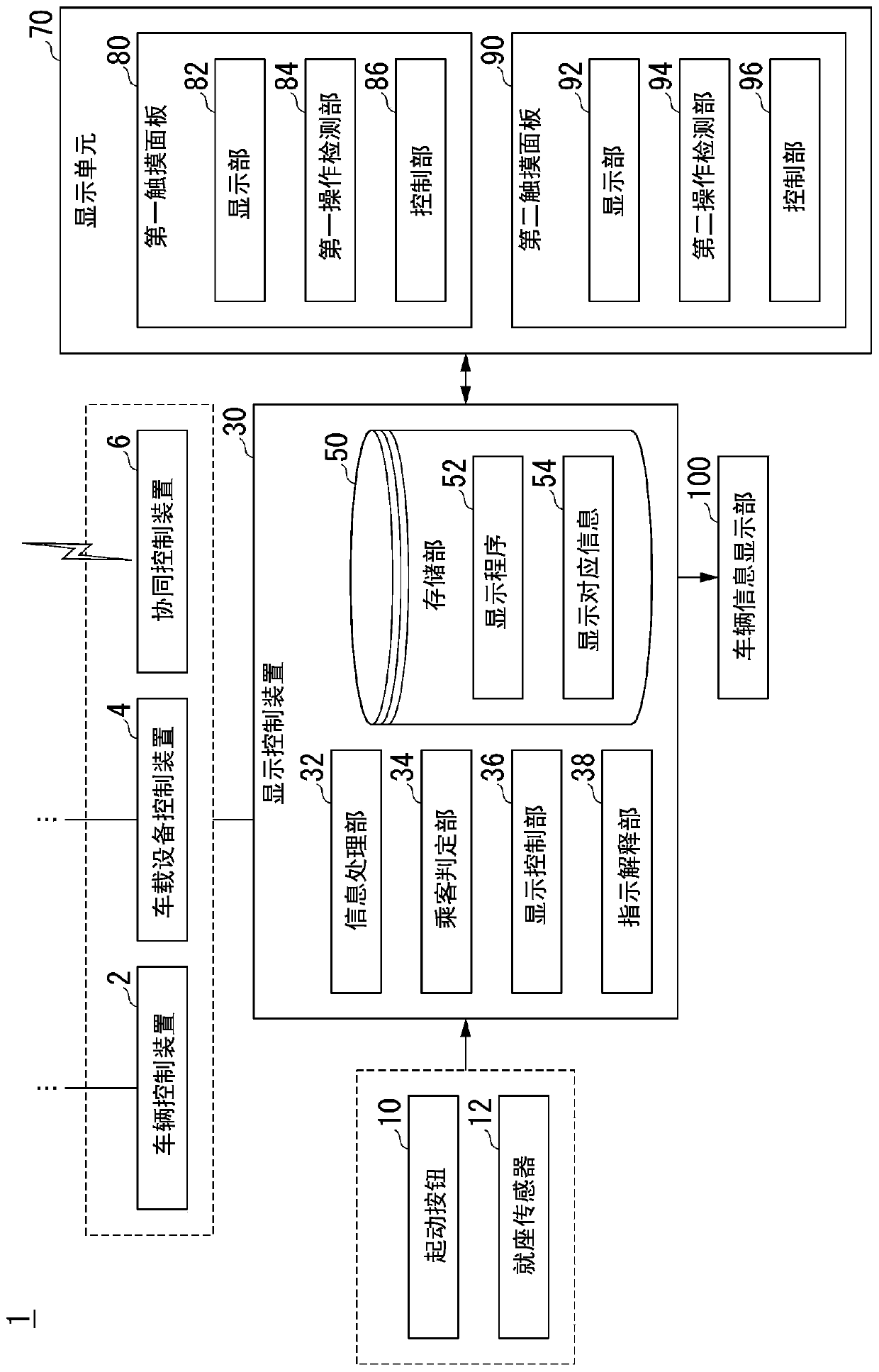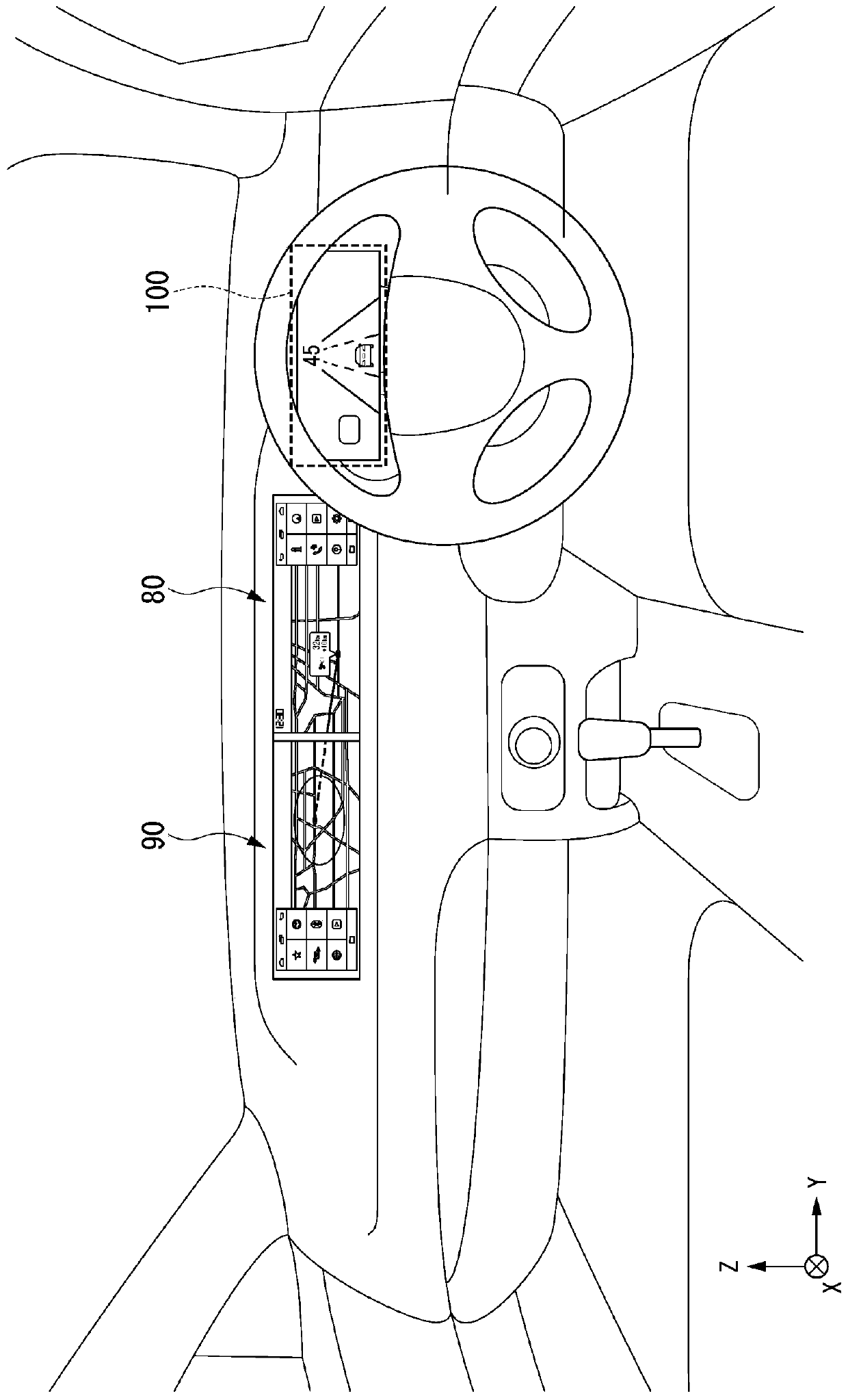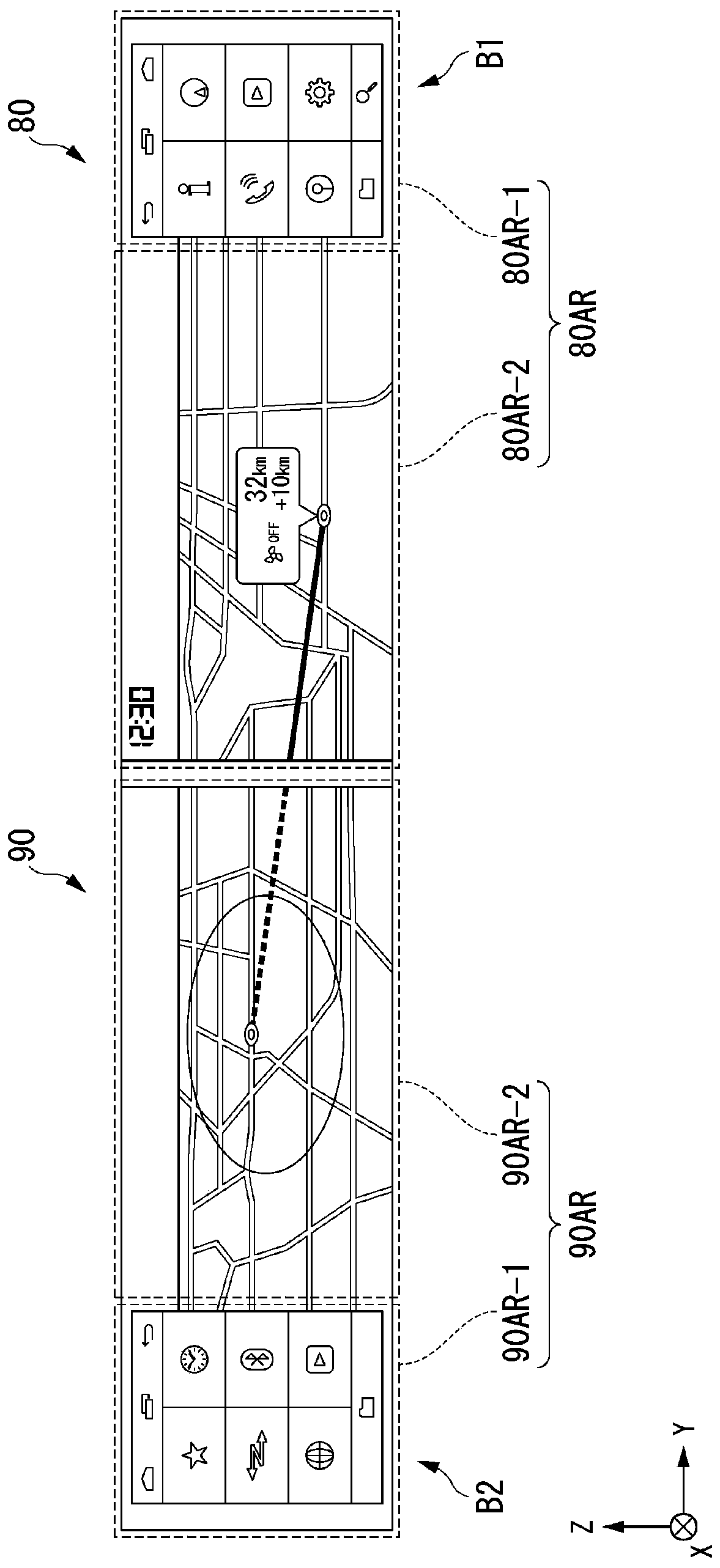VEHICLE DISPLAY DEVICE, AND VEHICLE DISPLAY METHOD, and storage medium
A display device, vehicle technology, applied to vehicle components, static indicators, transportation and packaging, etc., can solve the problems of not taking passengers into account, and achieve the effect of improving visual confirmation and operability
- Summary
- Abstract
- Description
- Claims
- Application Information
AI Technical Summary
Problems solved by technology
Method used
Image
Examples
no. 1 approach
[0040] figure 1 It is a figure which shows an example of the structure of the display system 1 mounted in a vehicle. The display system 1 includes a vehicle control device 2 , an in-vehicle device control device 4 , a cooperative control device 6 , a start button 10 , a seating sensor 12 , a display control device 30 , a display unit 70 , and a vehicle information display unit 100 .
[0041]The vehicle control device 2 is a control device that controls specific control devices related to driving, braking, steering, and the like of the vehicle. The vehicle is driven or stopped in the lane by the driver's operation and the control by a specific control device. The vehicle control device 2 controls a specific control device of an object according to an operation performed by a passenger on the display unit 70 .
[0042] The in-vehicle device control device 4 is a control device that controls in-vehicle devices (for example, an air conditioner, a car navigation system, audio equ...
no. 2 approach
[0100] Hereinafter, a second embodiment will be described. In the second embodiment, details of the processing performed by the display control device 30 and the second display unit 80 when there is no passenger in the passenger seat will be described. Hereinafter, the description will focus on differences from the first embodiment.
[0101] Figure 9 It is a figure for explaining the outline|summary of the process of the display control part 36 of 2nd Embodiment. with Figure 5 The content of different points will be explained centering on the points. A pattern (1#) is a state in which the start button 10 is not operated. In this case, the display control unit 36 controls the first touch panel 80 and the second touch panel 90 to be off.
[0102] Pattern (2#) is a state in which the start button 10 is operated and the passenger is not seated in the passenger seat. The second touch panel 90 controls the display unit 92 to be in the ON state, and controls the detection s...
no. 3 approach
[0116] Hereinafter, a third embodiment will be described. In the first embodiment, the display control device 30 determines whether or not a passenger is seated in the passenger seat based on the detection result of the seat occupancy sensor 12 . On the other hand, in the third embodiment, the display control device 30 determines whether or not a passenger is seated in the passenger seat based on the image captured by the camera in the cabin, the detection result of the door sensor, and the detection result of the seat belt sensor. . Hereinafter, differences from the first embodiment will be described.
[0117] Figure 12 It is a figure which shows an example of the functional structure of the display system 1A of 3rd Embodiment. The display system 1A includes an interior camera 14 , a door sensor 16 , and a seat belt sensor 18 in addition to the functional configuration of the display system 1 according to the first embodiment.
[0118] The interior camera 14 is, for exam...
PUM
 Login to View More
Login to View More Abstract
Description
Claims
Application Information
 Login to View More
Login to View More - R&D
- Intellectual Property
- Life Sciences
- Materials
- Tech Scout
- Unparalleled Data Quality
- Higher Quality Content
- 60% Fewer Hallucinations
Browse by: Latest US Patents, China's latest patents, Technical Efficacy Thesaurus, Application Domain, Technology Topic, Popular Technical Reports.
© 2025 PatSnap. All rights reserved.Legal|Privacy policy|Modern Slavery Act Transparency Statement|Sitemap|About US| Contact US: help@patsnap.com



